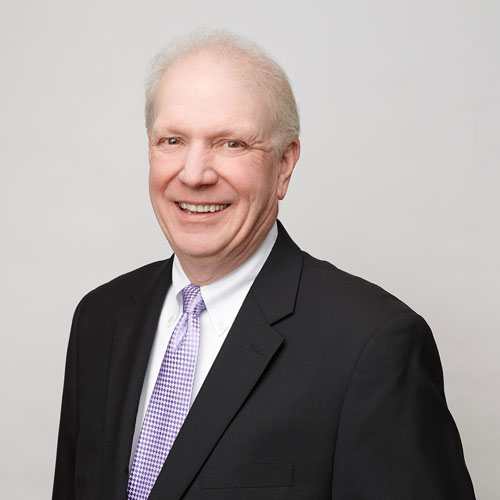
Supreme Court Rules Prometheus Personalized Medicine Claims Not Patent-Eligible
By: Paul M. Rivard
On March 20, 2012, the U.S. Supreme Court issued its ruling in Mayo Collaborative Services v. Prometheus Laboratories, Inc., striking down patent claims directed to methods of optimizing patient treatment in which the level of a certain drug metabolite is measured to identify a need to increase or decrease dosage levels. The unanimous decision authored by Justice Breyer reversed the Federal Circuit’s finding of patent-eligibility based on the claims embracing the transformative steps of “administering” a drug and “determining” metabolite levels.
Relying heavily on its own precedent, the Court explained the Prometheus claim “presents a case for patentability that is weaker than the (patent-eligible) claim in Diehr and no stronger than the (unpatentable) claim in Flook.” Diehr involved a method for molding raw, uncured rubber into molded products that included steps of (1) continuously monitoring the temperature on the inside of the mold, (2) feeding the resulting numbers into a computer to continuously recalculate the mold-opening time, and (3) configuring the computer to signal a device to open the press. Flook involved a method for adjusting “alarm limits” in the catalytic conversion of hydrocarbons. The Flook method included steps of continuously monitoring operating conditions such as temperature, pressure, and flow rates; using a mathematical algorithm to calculate alarm limits; and adjusting the system to reflect the new alarm limit values.
No Safe Harbor in Machine or Transformation
The Supreme Court’s 2010 decision in Bilski v. Kappos held that the “machine or transformation” test is “a useful and important clue” but “not the sole test for deciding whether an invention is a patent-eligible ‘process.’” The claimed process in Bilski was found not to satisfy the “machine or transformation” test and to be patent-ineligible. One question left unanswered in Bilski was whether satisfaction of the “machine or transformation” test provides a safe harbor for patent eligibility. The Prometheus Court squarely answered this question in the negative.
The Federal Circuit found the Prometheus claims patent-eligible based on the claimed steps of “administering” the drug (transforming the body) and “determining” metabolite levels (transforming the blood). The Supreme Court disagreed the “determining” step was necessarily transformative because of the possibility that newly developed techniques might not require transforming the blood. The Court did not appear to dispute the “administering” step was transformative, but nevertheless dismissed it as merely “picking out the relevant audience.” According to the Court, any transformative steps in the claims were insufficient to confer patent-eligibility because they “add nothing specific to the laws of nature other than what is well-understood, routine, conventional activity, previously engaged in by those in the field.”
Court Blurs Novelty and Eligibility Questions
The claims at issue require a step of “administering a drug providing 6-thioguanine to a subject.” The Court found this step simply refers to “a preexisting audience” of “doctors [who] used thiopurine drugs to treat patients suffering from autoimmune disorders.” The Court refused to rely on this step to confer patent eligibility, citing Bilski and Diehr as instructing “the prohibition against patenting abstract ideas cannot be circumvented by attempting to limit the use of the formula to a particular technological environment.”
The Court declined to follow the suggestion of the United States as amicus curie in relying on other provisions of the Patent Act, such as § 102 (novelty) and § 103 (non-obviousness), to weed out unpatentable claims that embrace the application of a law of nature. The Court explained that when “evaluating the significance of additional steps, the §101 patent-eligibility inquiry and, say, the §102 novelty inquiry might sometimes overlap.”
The opinion mainly focuses on the practical preemptive effect of the claims rather than on particular claim language. The Court said its “precedents . . . warn us against interpreting patent statutes in ways that make patent eligibility ‘depend simply on the draftsman’s art’ without reference to the ‘principles underlying the prohibition against patents for [natural laws]’ . . . They warn us against upholding patents that claim processes that too broadly preempt the use of a natural law.” In this case, the Court found the patents at issue “tie up too much future use of laws of nature.”
“Less Conventional” Steps Sufficient?
The opinion stopped short of stripping all “old” steps out of a claim in the eligibility analysis. The Court left open the possibility that the recitation of “less conventional” steps in the “particular applications” of laws of nature might be sufficient to confer eligibility.
While future decisions will need to sort out what types of “less conventional” steps are needed for diagnostic claims to pass muster under § 101, perhaps a key takeaway of the decision for practitioners is the need to include process steps (apart from “administering” drugs and “determining” metabolite levels) that have some level of specificity so that the claims will not be regarded as preempting a law of nature.
A Matter for Congress?
Acknowledging the competing interests of the parties, namely the ability to secure patent rights to reward significant investment on one hand and the ability to freely conduct research on the other, the Court described patent protection as “a two-edged sword” that “provides monetary incentives that lead to creation, invention, and discovery” but which “can impede the flow of information that might permit, indeed spur, invention, by, for example, raising the price of using the patented ideas once created.” The Court suggested any rules specific to patent eligibility of personalized medicine should be left to Congress.
Please click here to view the decision.
Please click here to view the USPTO’s memo to examiners regarding Mayo v. Prometheus.
Posted: March 20, 2012


